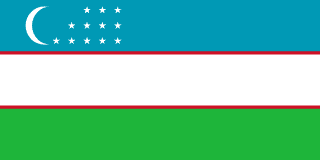Uzbekistan - Environment

As far as the environment of Uzbekistan is concerned, there have been . As for nvironment - international agreements, we have; .
About the environment of Uzbekistan
| Climate | We have mostly mid-latitude desert, long, hot summers, mild winters; semiarid grassland in east |
|---|---|
| Revenue from forest resources | |
| Revenue from coal | |
| Waste and recycling | Municipal solid waste generated annually: 4 million tons (2024 est.) |
| Total renewable water resources | 48.87 billion cubic meters (2022 est.) |
| Major rivers (by length in km) | |
| Total water withdrawal | |
| Municipal | 2.3 billion cubic meters (2022) |
| Industrial | 1.2 billion cubic meters (2022) |
| Agricultural | 41 billion cubic meters (2022) |
| Land Use | |
| Agricultural land | 58.1% (2022 est.) |
| Agricultural land: arable land | arable land: 9.1% (2022 est.) |
| Agricultural land: permanent crops | permanent crops: 1% (2022 est.) |
| Agricultural land: permanent pasture | permanent pasture: 47.9% (2022 est.) |
| Forest | 8.5% (2022 est.) |
| Other | 33.5% (2022 est.) |
| Urbanization | |
| Urban population | 50.5% of total population (2023) |
| Rate of urbanization | 1.25% annual rate of change (2020-25 est.) |
| Major urban areas (Pop) | 2.603 million TASHKENT (capital) (2023). |
All Important Facts about Uzbekistan
Want to know more about Uzbekistan? Check all different factbooks for Uzbekistan below.
-
 Uzbekistan Factbook
Uzbekistan Factbook
-
 The Economy of Uzbekistan
The Economy of Uzbekistan
-
 Learn about the Government of Uzbekistan
Learn about the Government of Uzbekistan
-
 Communication in Uzbekistan
Communication in Uzbekistan
-
 Popular Universities in Uzbekistan
Popular Universities in Uzbekistan
-
 Enerny in Uzbekistan
Enerny in Uzbekistan
-
 Transport in Uzbekistan
Transport in Uzbekistan
-
 The Geography and society of Uzbekistan
The Geography and society of Uzbekistan
-
 The Environment of Uzbekistan
The Environment of Uzbekistan
-
 Military and security in Uzbekistan
Military and security in Uzbekistan